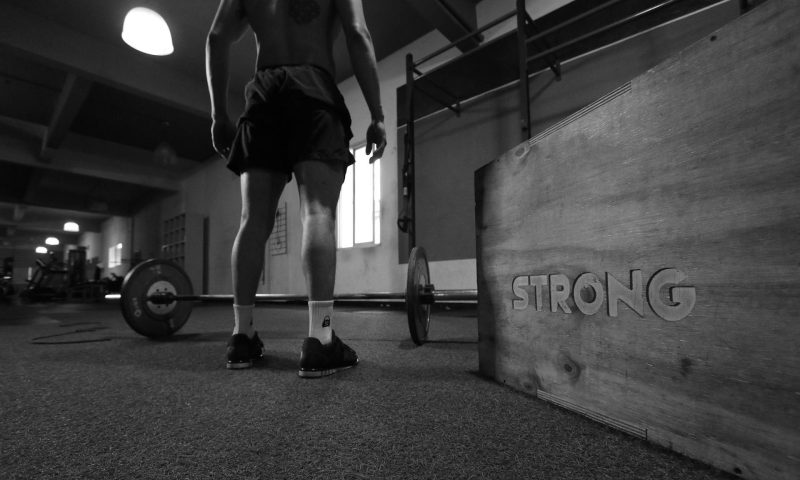Barbell training will always be a favorite among powerlifters and strength training enthusiasts. I like using the barbell because it helps me balance my strength on both sides, as I tend to favor my right side. Barbell training comes with many benefits, including the ability to perform compound exercises that work multiple muscle groups simultaneously for an efficient workout.
You can also incorporate progressive overload and add small weight plates to the barbell to increase the weight over time as you get stronger. The benefits of resistance training are numerous and well-studied, ranging from improved physical performance and cognitive function to enhanced self-esteem and heart health, as well as reduced resting blood pressure. You can build strength in your upper body using only a humble barbell, and we asked certified personal trainer Ian Groves to share his expert insight on upper body barbell training.
Interview with fitness expert Ian Groves

What’s the best way to boost upper body power at home or in the gym using only a barbell? Ian Groves, a certified personal trainer and Managing Director of Training Station, shared his top upper body barbell training tips, favorite exercises, and more with The Manual. Ian Groves has years of experience in the fitness industry and knows a thing or two about barbell training.
The Manual: What are the benefits of targeting upper body muscles?
Ian Groves: Targeting upper body muscles can help you look strong, improve your posture and grip strength, and boost your metabolism, which helps with weight loss. It can also help with everyday activities, such as lifting groceries or gardening. I spend a lot of time sitting at my desk, and if I take a week or two away from resistance training, I start getting pain in my back because I’m not working my upper body muscles. Studies like this one have found that hand grip strength is a predictor of an individual’s health, and what’s the best way to improve this? That’s right, training your upper body muscles!

TM: How often (how many times a week) do you recommend our readers work their upper body muscles? What are the main muscles to target?
Ian Groves: If you’re new to resistance training, I recommend working your upper body muscles twice weekly. You can either do two full-body workouts weekly or have a three-day split where you do two upper-body workouts and one lower-body workout. For more experienced lifters, you’ll need to work your upper body muscles between two and four times a week. The main upper body muscles to target are the chest, shoulders, and back, but you’ll also want to hit the biceps and triceps in your exercise routine.

TM: What are your top three barbell exercises for building upper body muscle strength?
Ian Groves:
- Barbell bench press (flat or incline)
- Barbell bent-over rows (or a similar variation, such as Yates rows or Pendlay rows)
- Barbell overhead press
As I mentioned above, the main upper body muscles to target are the chest, shoulders, and back, and these exercises hit all three muscle groups. You’ll even work your biceps and triceps because all three exercises are compound movements, meaning they work more than one muscle group.
TM: What are the benefits of using a barbell?
Ian Groves: The main benefit of using a barbell over dumbbells or kettlebells is the load you can lift. Let’s take the barbell bench press, which you saw above, as an example. When you do the dumbbell version of the bench press, the load you lift will be lighter because each side of the body works separately. With a barbell, you use both hands, increasing stability and allowing you to lift heavier.
The other benefit of a barbell is that it’s easier to incorporate progressive overload. I’ll go into more detail on this below, but you can buy fractional weight plates as little as 0.25 lbs. It’s more difficult to progress with dumbbells or kettlebells because the jumps are larger.

TM: What do you feel are the main differences between using a barbell and using a dumbbell?
Ian Groves: Both are great, but barbells are better for lifting heavier loads and progressive overload. However, the downside to using a barbell is that some exercises may require a workout partner to spot you, especially when you lift heavy. With dumbbells, you’ll lift lighter loads, and progressive overload is more difficult. However, because each side of the body works separately, dumbbells are better for fixing muscular imbalances and great for those with injuries. Another significant difference between barbells and dumbbells is the range of motion (ROM) — you’ll get a slightly longer range of motion with dumbbells.
TM: How do you fuel your body to prepare for an intense upper-body barbell workout? For example, could you talk about nutrition, maybe breakfast, and if you use any pre-workouts?
Ian Groves: Firstly, I don’t use a pre-workout. I have tried them in the past, and they did help me lift heavier weights. But, after ten or fifteen uses, the effects diminished. The only way to continue getting the same pump before a workout was to take more pre-workout, and this isn’t something that I wanted to do. For this reason, I stopped taking pre-workout and instead focused on eating properly.
I usually do my resistance training workouts in the morning, so to prepare, I have a breakfast that consists of oats, whey protein powder, peanut butter, a banana, and full-fat milk. I usually blend these and sip on them while I answer emails, but if I have more time, I make the oats in a pan. I also have a black coffee with this. Because oats are a slow-digesting carbohydrate, they give me energy throughout my workout.

TM: Research shows that progressive overload, where you gradually increase the weight over time as you develop strength, can help fuel muscle growth and power. As a personal trainer, what are your top tips for incorporating progressive overload to build muscle?
Ian Groves: Great question. Yes, progressive overload is key to building upper-body muscle. However, increasing the weight gradually over time isn’t the only way to utilize progressive overload. Increasing the number of reps, increasing the number of sets, or shortening rest times are other ways to achieve progressive overload. For example, let’s say you do a 140-lb barbell bench press for three sets of six reps in one workout, and in the next workout, you do the same weight for three sets of eight reps. This is also progressive overload.
Other tips I have are to track your workouts and to buy your own fractional weight plates, for example, 0.5 or 1 lbs. You can’t gradually increase the weight over time if you don’t remember what you did in the previous workout. Additionally, it’s easier to add 0.5 or 1 lb to either side of the bar than it is to add 2.5 or 5 lbs. Of course, the latter tip depends on the weight plates you currently have in your gym.
TM: Do you recommend push/pull routines or push days and pull days?
Ian Groves: I recommend whichever one gets you to the gym consistently for the longest period of time. Even though it sounds cliche, building your upper body muscles is all about consistency, so the workout routine you pick should be the one that suits you the best. I enjoy having a fixed weekly split, such as push days and pull days, because I know what to do when I wake up in the morning. However, there’s nothing wrong with push/pull routines where you have a rotating routine. What matters is that you get the job done.

TM: Do you suggest our readers take rest days?
Ian Groves: Of course! Rest days are important for the body and mind and can help avoid injuries. The number of rest days you need weekly depends on several factors, however, so it’s difficult to recommend how many. When I was younger, I needed fewer rest days than I do now, and that’s because it takes my body longer to recover from intense workouts. If you do shorter workouts, you might need fewer rest days than someone doing longer, intense workouts. Either way, you should have at least one rest day in your workout routine, but some gym-goers take three or four.
TM: Could you share a sample upper-body barbell workout with our readers?
Ian Groves:
- Barbell bench press (four sets of six reps)
- Barbell bent-over rows (four sets of eight reps)
- Barbell overhead press (three sets of eight reps)
- Barbell bicep curls (three sets of ten reps)
- Barbell skull crushers (three sets of ten reps)
I suggest that you rest for between two and three minutes on the first three exercises and between one and two minutes on the last two. As mentioned above, progressive overload is key to ensuring that you keep progressing with this upper-body barbell workout.




